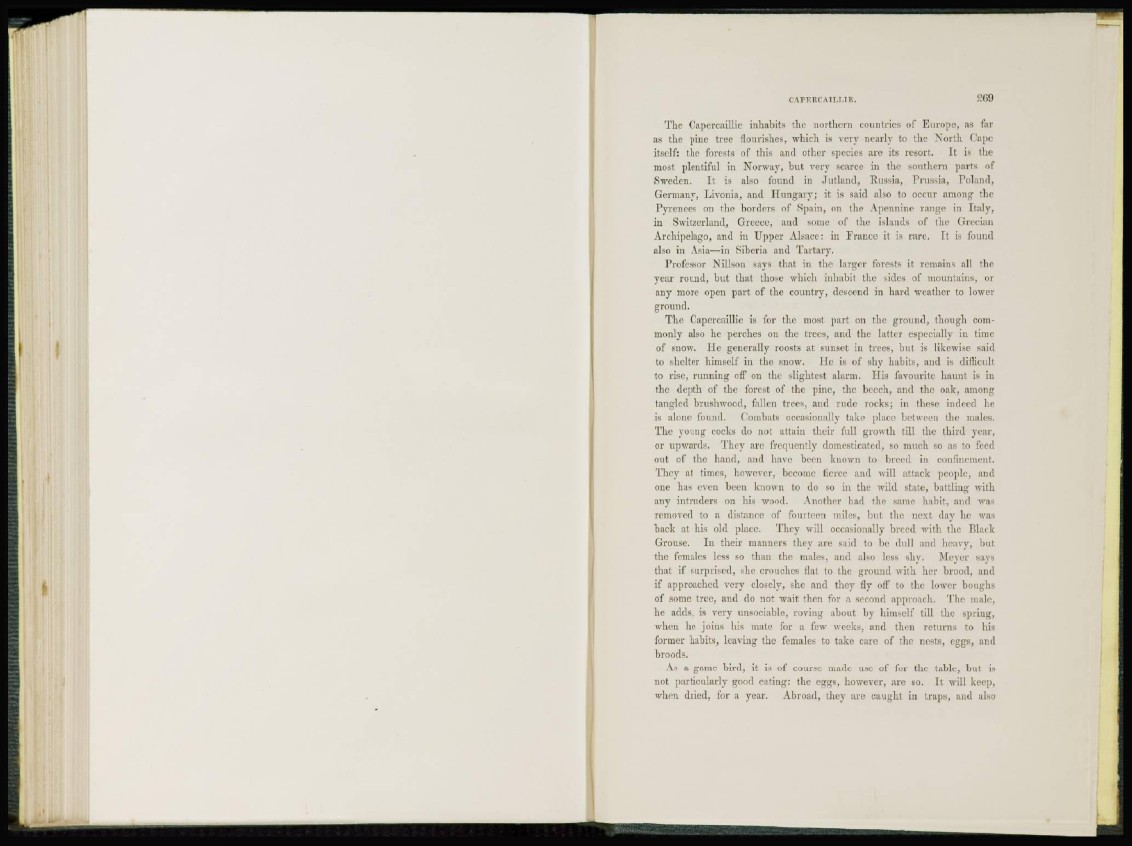
The Capercaillie inhabits the northern countries of Europe, as far
as the pine tree nourishes, which is very nearly to the North Cape
itself: the forests of this and other species are its resort. It is the
most plentiful in Norway, but very scarce in the sottthern parts of
Sweden. It is also found in Jutland, Russia, Prussia, Poland,
Germany, Livonia, and Hungary; it is said also to occur among the
Pyrenees on the borders of Spain, on the Apennine range in Italy,
in Switzerland, Greece, and some of the islands of the Grecian
Archipelago, and in Upper Alsace: in France it is rare. It is found
also in Asia—in Siberia and Tartary.
Professor Nillson says that in the larger forests it remains all the
year round, but that those which inhabit the sides of mountains, or
any more open part of the country, descend in hard weather to lower
ground.
The Capercaillie is for the most part on the ground, though commonly
also he perches on the trees, and the latter especially in time
of snow. He generally roosts at sunset in trees, but is likewise said
to shelter himself in the snow. He is of shy habits, and is difficult
to rise, running off on the slightest alarm. His favourite haunt is in
the depth of the forest of the pine, the beech, and the oak, among
tangled brushwood, fallen trees, and rude rocks; in these indeed he
is alone found. Combats occasionally take place between the males.
The young cocks do not attain their full growth till the third year,
or upwards. They arc frequently domesticated, so much so as to feed
out of the hand, and have been known to breed in confinement.
They at times, however, become fierce and will attack people, and
one has even been known to do so in the wild state, battling with
any intruders on his wood. Another had the same habit, and was
removed to a distance of fourteen miles, but the next day he was
back at his old place. They will occasionally breed with the Black
Grouse. In their manners they are said to be dull and heavy, but
the females less so than the males, and also less shy. Meyer says
that if surprised, she crouches flat to the ground with her brood, and
if approached very closely, she and they fly off to the lower boughs
of some tree, and do not wait then for a second approach. The male,
he adds, is very unsociable, roving about by himself till the spring,
when he joins his mate for a few weeks, and then returns to his
former habits, leaving the females to take care of the nests, eggs, and
broods.
As a game bird, it is of course made use of for the table, but is
not particularly good eating: the eggs, however, are so. It will keep,
when dried, for a year. Abroad, they are caught in traps, and also